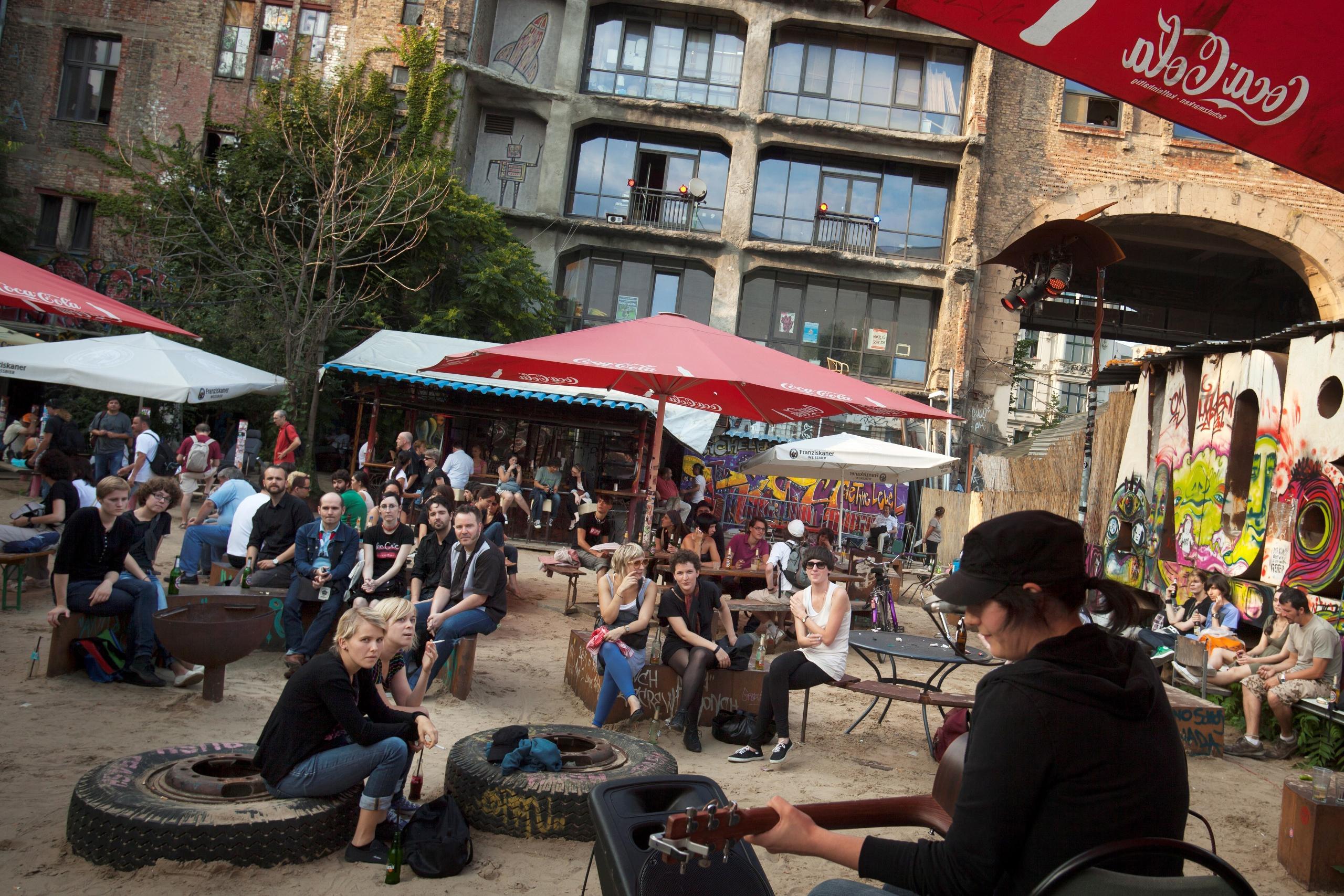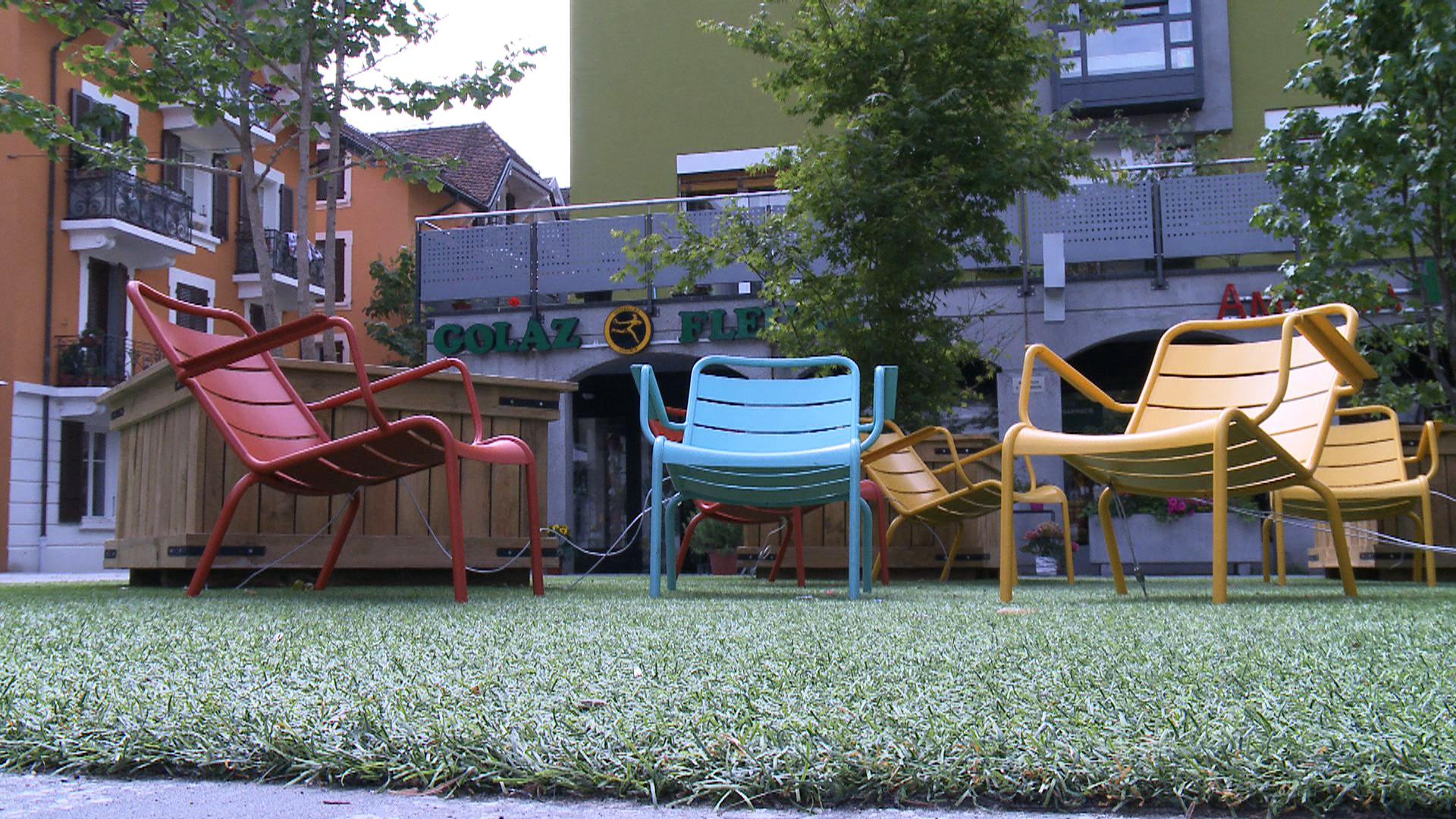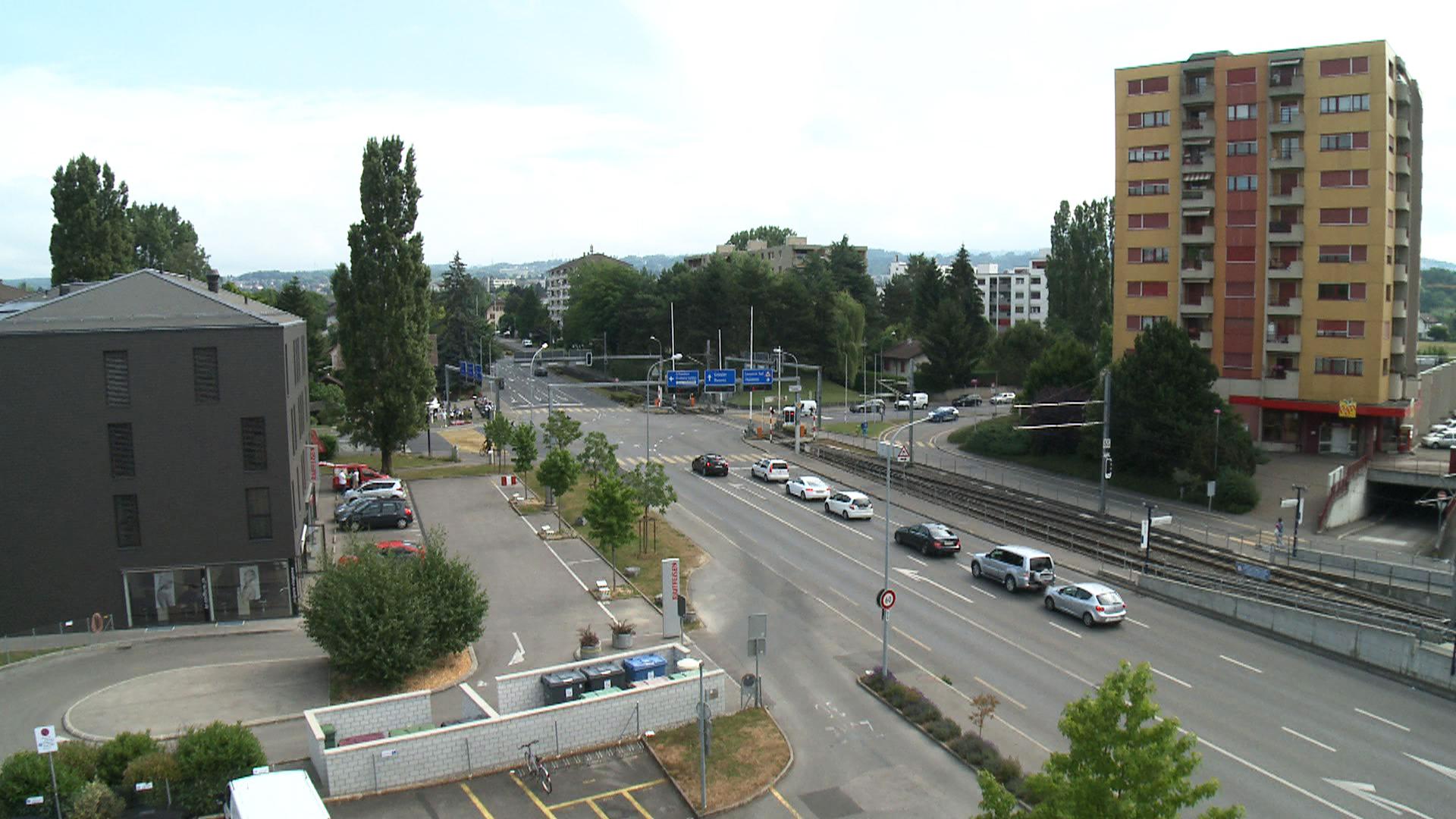Learning how to improve life in the suburbs

Stopping urban sprawl involves turning suburbs into mini-cities. That’s the latest collective thinking from a pool of top experts. But it’s a fine balancing act between creating livelier, liveable hubs and overcrowded, noisy sub-centres.
Just west of Lausanne, Switzerland’s fourth largest city, there is a sunny public square framed by two shopping centres. Antique wooden crates are filled with a community gardening project, and a canopy casts shade over benches dotted with families and shoppers. The burbling of a fountain is drowned by the shrieks of children on a playground. Train and bus stations lie a few steps away, eliminating the need for travel by car.
This is the Place du Marché in the commune of Renens, and it is an example of the kind of efficient urban design that Switzerland is trying to implement in its sprawling suburbs.

More
A flourishing urban space: Place du Marché
“If we can stop urban sprawl and start densifying suburban areas, we can improve sustainability, efficiency and quality-of-life,” says Brigit Wehrli, author of the recent national research programme (NRP) 65 synthesis report on the urban quality of cities and surrounding areas.
“That’s because densifying suburban areas means not only more buildings, but also more urbanity, more interaction and more activities.”
Building inward
In 2009, the Swiss National Science Foundation charged NRP 65 with developing guidelines for improving the liveability and sustainability of “urban agglomerations” – suburbs that have been creeping outward from Swiss city centres over the past several decades. The four-year programme drew on the multi-disciplinary expertise of 60 architects, planners, sociologists, and geographers working on five different projects.
Denser cities mean shorter commute times, less wasted space, and greater access to central resources. But intense urbanity can also evoke crowds, pollution and noise, creating a desire to ‘get away from it all’. The NRP 65 researchers used a series of case studies to show how high-density urban life can enhance personal well-being as well as economic efficiency and environmental sustainability.
For example, Aarau, the capital of canton Aargau, revised its spatial planning laws in 2013 to prioritise densifying urban areas and encouraging them to grow inward, rather than sprawl outward. The following year, Aarau created a strategy to define and harmonise different zones for transportation, buildings and landscapes. Aarau’s long, curving south train station was constructed to act as a buffer between the city’s noisy northern edge, and its tranquil countryside to the south.
Switzerland’s largest agglomeration, Köniz, is located just outside of the capital of Bern. With 40,000 inhabitants, Köniz is reminiscent of a city, yet it also has large swaths of countryside and cultivated landscapes. The region has curbed sprawl in part by providing financial incentives to turn development spaces into agricultural areas.
Other areas in Switzerland still have a long way to go.
“Unfinished settlements”
About 74% of Swiss live in urban areas, and with a high standard of living and low mortgage rates, it is relatively easy to move to the suburbs. Some even argue that Switzerland’s decentralised government across 26 cantons leads to uncoordinated decision-making when it comes to urbanisation.
In urban agglomerations, which Wehrli calls “unfinished settlements”, isolated single-family houses are mixed in among industrial parks, and green spaces and commercial hubs are few and far between. Inconvenient access to public transport can encourage reliance on motor vehicles, intensifying congestion and pollution.
An example of an unfinished settlement can be found at an intersection a few kilometres southwest of Lausanne’s Place du Marché. Here, the Route de la Maladière and Avenue du Tir-Fédéral divide the communes of Chavannes and Ecublens. The busy Avenue du Tir-Fédéral runs parallel to the metro tracks, further dividing a space that is already perched on the no-man’s-land between two communes.
Ariane Widmer, an architect and urban planner, heads the planning office for Lausanne West – the suburban district containing Ecublens, Renens and Chavannes, plus five other communes. Widmer observes that an avenue could bring together the two sides of this intersection to create a unified public space.
“Instead of an avenue, there is wasted space in front of the buildings instead of sidewalks, terraces or gardens,” she says. “It is functional for the cars and the metro, but no attention is paid to people walking or sitting.”

More
Cut off from the community: Avenue du Tir-Fédéral:
The planning office was founded in 2004 to improve the urban quality of the eight communes of Lausanne West. The communes were once small villages that started growing rapidly at the beginning of the 20th century, when industrialisation drew people out of the countryside with the promise of jobs. The villages experienced further growth spurts in the 1950s, 60s and 70s, as more cars enabled greater mobility.
“There is a big difference between the Lausanne West communes and Lausanne, which has had a tradition of urban planning for more than 100 years,” says Widmer. “The communes were not organised to manage this growth, because they used to be little villages with no urban planning tradition. This is typical of many places in Switzerland.”
Something for everyone
Of course, not everyone can (or wishes to) live in a bustling city. Instead, NRP 65 proposes that the characteristics of cities that make them efficient – shared spaces, higher density, accessible transportation – are brought to urban agglomerations to imbue them with a sense of public infrastructure and identity.
Wehrli says that coordinated urbanisation efforts on a national level are a good place to start, because many agglomerations have originated as a result of local decisions to build outward. But even top-down efforts should include citizen participation.
“Cooperative planning processes with early involvement of the authorities, the neighbours and other stakeholders are essential for achieving the necessary density and quality of urban areas in Switzerland,” Wehrli says.
Ultimately, Wehrli envisions a “network of small cities” where the agglomerations once were: areas that eliminate the waste and inefficiency of the suburbs while retaining the community spirit valued by their inhabitants.
Urban Sprawl in Switzerland
Urban sprawl is a serious problem in many countries, particularly in the developing world, but Switzerland’s small size makes it especially vulnerable. Just 30% of Switzerland’s 42,000 square kilometres of land area are fit for intensive human activities like construction, transportation and agriculture; the rest of the country is mountains, forests and bodies of water.
Urban sprawl first took hold in Switzerland during a construction boom in the 1960s and 70s. Today, Switzerland has about eight million inhabitants, 74% of whom live in urban areas. The Federal Statistical Office expects the population to hit ten million by 2045, and efficient urban design will be essential to managing this growth.
NRP 65
Among the research programme’s results were seven elements of good urban quality: centrality, accessibility, utility, adaptability, appropriation, diversity, and interaction. These elements take into account a space’s ability to create identity and community spirit (appropriation, diversity, interaction); to use energy and resources wisely (utility, adaptability); and to improve efficiency (centrality, accessibility).
The researchers reasoned that these qualities are specific enough to separate good urban quality from poor urban quality, yet abstract enough to be applied by architects and planners in a variety different spaces.
NRP 65 published two synthesis reportsExternal link 2015 after the programme’s completion. Just hyperlink to them here and in a separate link. The below is not our style.
The NRPs provide the scientific foundations to solve problems of national importance that parliament has classified as urgent.

In compliance with the JTI standards
More: SWI swissinfo.ch certified by the Journalism Trust Initiative












You can find an overview of ongoing debates with our journalists here . Please join us!
If you want to start a conversation about a topic raised in this article or want to report factual errors, email us at english@swissinfo.ch.